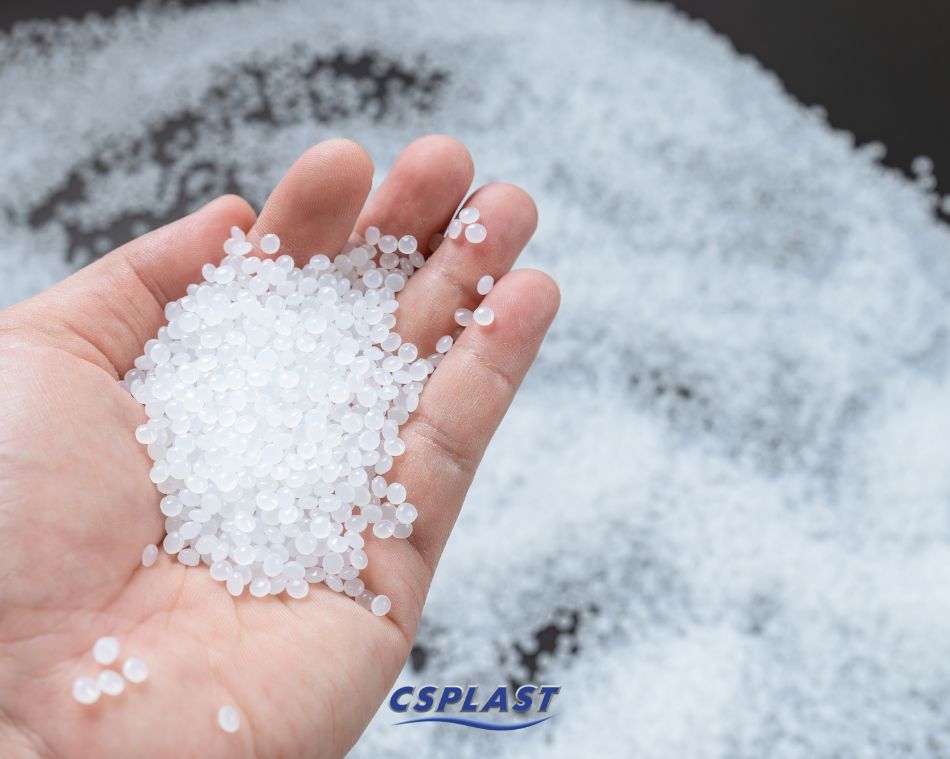When talking about plastics, people often wonder what the difference is between plastics and polymers. In reality, there is no difference – the two terms essentially refer to the same materials.
The term “polymer” comes from the Greek “poly“, which means “many“, and “meros” or “mer“, which means “unit“. Polymers are chemical compounds consisting of long chains composed of small repeating units called monomers. This chain-like molecular structure is what distinguishes them from other organic compounds like alcohols or acids.
When we talk about “plastics”, we are referring to polymer-based engineering materials. Usually, various additives are added to the polymer chains to give them desired properties such as color, strength, or flexibility.
Polymers can be of both natural and synthetic origin. Examples of natural polymers are rubber, amber, wood and paper cellulose, as well as proteins and nucleic acids like DNA. Synthetic polymers, on the other hand, are industrially produced through polymerization processes.
In general, polymeric materials are divided into three main categories:
- Rubbers (elastomers)
- Thermosets
Thermoplastics
Thermoplastics, in particular, are widely used in injection moulding and therefore by us at Csplast for the production of various types of products.
In addition to the common organic elements such as carbon, hydrogen and oxygen, plastics can also contain inorganic elements such as silicon, nitrogen, fluorine, phosphorus, sulfur and chlorine. Rarely, however, is a pure polymer used – usually additives are added to improve performance, such as lubricants, stabilizers, colorants, reinforcing fibers and much more.
In summary, plastic and polymers are the same thing: synthetic materials composed of long chains of monomers, with endless possibilities for applications thanks to the ability to customize their properties through the addition of various additives.
Here at Csplast, we have been using a wide variety of thermoplastics for over forty years to produce your products through injection moulding. Thermoplastics have characteristics that make them particularly suitable for this production technology, including:
- Ease of melting and fluidity during injection into the mould;
- Ability to retain their shape once cooled and solidified;
- Ability to be recycled and reused multiple times.
Some of the most commonly used thermoplastics in moulding are:
- Polypropylene (PP): widely used for the production of automotive components, containers, toys, appliances.
- Polyethylene (PE): used for the manufacture of items such as bottles, containers, bags, pipes.
- Polystyrene (PS): suitable for the production of disposable tableware, toys, electronics.
- Polyvinyl acetate (PVC): used for the manufacture of tubes, profiles, coatings, etc.
- Polycarbonate (PC): used for the manufacture of optical components, lenses, screens, covers.
- Polyethylene terephthalate (PET): commonly used for the production of bottles, packaging, containers.
Csplast, with its experience in injection moulding, is able to work with a wide range of these thermoplastics to produce a wide variety of finished products. From automotive to electronics, from consumer goods to the medical and food sectors, Csplast leverages the potential of thermoplastic materials to offer innovative and customized solutions to its customers.
Contact us if you have a project to develop or if you are interested in understanding which material is best suited for moulding your product – we will be happy to assist you



